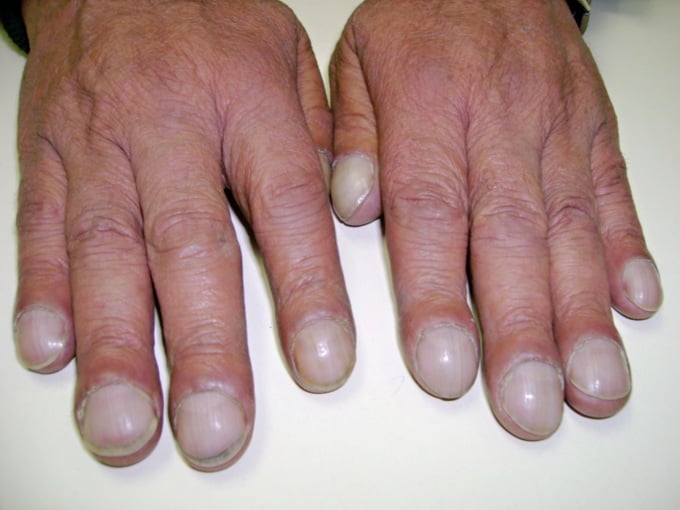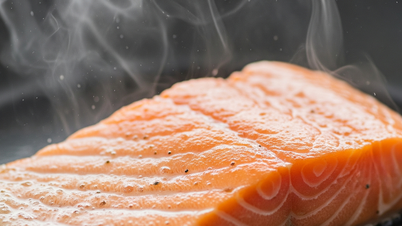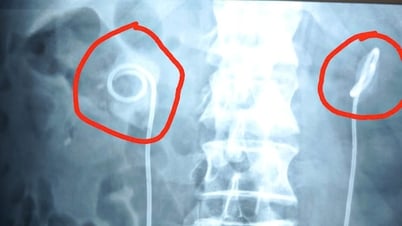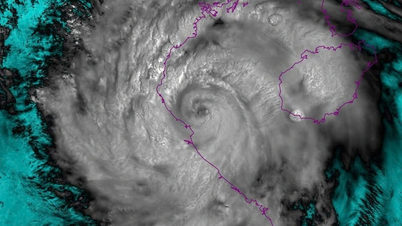Dr. Mike Hansen shares 10 warning signs of lung cancer to watch out for, including clubbing of fingers, persistent cough or wheezing.
Lung cancer rates are expected to drop by 2% by 2025. But of those, about 57% are still diagnosed too late, significantly reducing the chance of survival. The disease is often linked to smoking, but nonsmokers can also be at risk, says Mike Hansen, MD, a lung specialist in South Dakota.
"There are actually many different types of lung cancer. One type in particular is the type that non-smokers can get — lung adenocarcinoma," says Hansen.
Early diagnosis gives patients the best possible chance of successful treatment. “The number one warning sign is something most people don’t think about or don’t know about. It’s changes in the nails,” Hansen says, listing 10 warning signs to look out for.
Clubbed fingers
Clubbing of the fingers is a potential sign of lung cancer, causing swelling around the fingertips.
This condition occurs in stages. First, the nail bed becomes softer, and the skin around the nail becomes shiny. Then, the nail begins to look more curved than normal when viewed from the side. Finally, some fingers swell as fluid builds up in the soft tissues of the finger.
"Lung cancer isn't the only cause of curved nails. But if it happens, it's definitely something to consider," says Hansen.

Clubbed fingers. Photo: Wikipedia
Out of breath
Shortness of breath, or a feeling of being short of breath, is also a potential warning sign of lung cancer. A tumor that is blocking and narrowing the airways can cause shortness of breath. Or if the tumor causes fluid to build up outside the lungs, called a pleural effusion, the person may also feel short of breath.
Persistent cough
A persistent cough is a common symptom of respiratory illnesses, but if it lasts more than three weeks it could be lung cancer.
"Pay attention to whether the chronic cough is continuous or intermittent, dry or productive of mucus," Hansen notes.
Additionally, coughing up blood, even a little, can be a sign of lung cancer and requires immediate medical attention.
Wheezing
Wheezing occurs when the airways in your lungs become blocked, constricted, or inflamed. While wheezing can be associated with many conditions, such as asthma or COPD, it can also be a sign of lung cancer.
Tired
Late-stage lung cancer can cause persistent fatigue, exhaustion, or lack of energy. Cancer-related fatigue is often more intense than the usual tiredness felt while jogging on a treadmill. For cancer patients, fatigue does not improve even with rest.
Chest pain
Chest pain is another symptom of lung cancer, especially if the cancer has spread to the chest wall or caused swollen lymph nodes in the chest.
Chest pain caused by cancer is often sharp, dull, or comes and goes. It may be worse when you breathe deeply, cough, sneeze, or even laugh.
Recurrent chest infections
You should see your doctor if you have recurring chest infections, such as bronchitis or pneumonia.
"Healthy people can get these things. But if you have a recurring pattern, it can be a symptom of a lung tumor, which can block the airway and make you more susceptible to infection," Hansen explains.
Difficulty swallowing
The common cold can make it hard to swallow. But it can also be a red flag for lung cancer, especially if it's accompanied by pain.
“This happens if a tumor presses on the esophagus. If the cancer spreads to the lymph nodes, these swollen lymph nodes will press on the esophagus,” says Hansen.
Hoarseness
In most cases, hoarseness is caused by laryngitis. But if the symptom persists or there is a significant change in voice, it could be a warning sign of lung cancer. This condition may be caused by a tumor pressing on the nerve that controls the larynx, called the recurrent laryngeal nerve.
Reduced appetite
Loss of appetite and unexplained weight loss are common symptoms of most cancers, and lung cancer is no exception.
If you think you have symptoms of lung cancer, see your doctor as soon as possible.
Khanh Linh (According to Express )
Source link



![[Photo] Hanoi: Authorities work hard to overcome the effects of heavy rain](https://vphoto.vietnam.vn/thumb/1200x675/vietnam/resource/IMAGE/2025/8/26/380f98ee36a34e62a9b7894b020112a8)

![[Photo] Multi-colored cultural space at the Exhibition "80 years of the journey of Independence - Freedom - Happiness"](https://vphoto.vietnam.vn/thumb/1200x675/vietnam/resource/IMAGE/2025/8/26/fe69de34803e4ac1bf88ce49813d95d8)


































































































Comment (0)